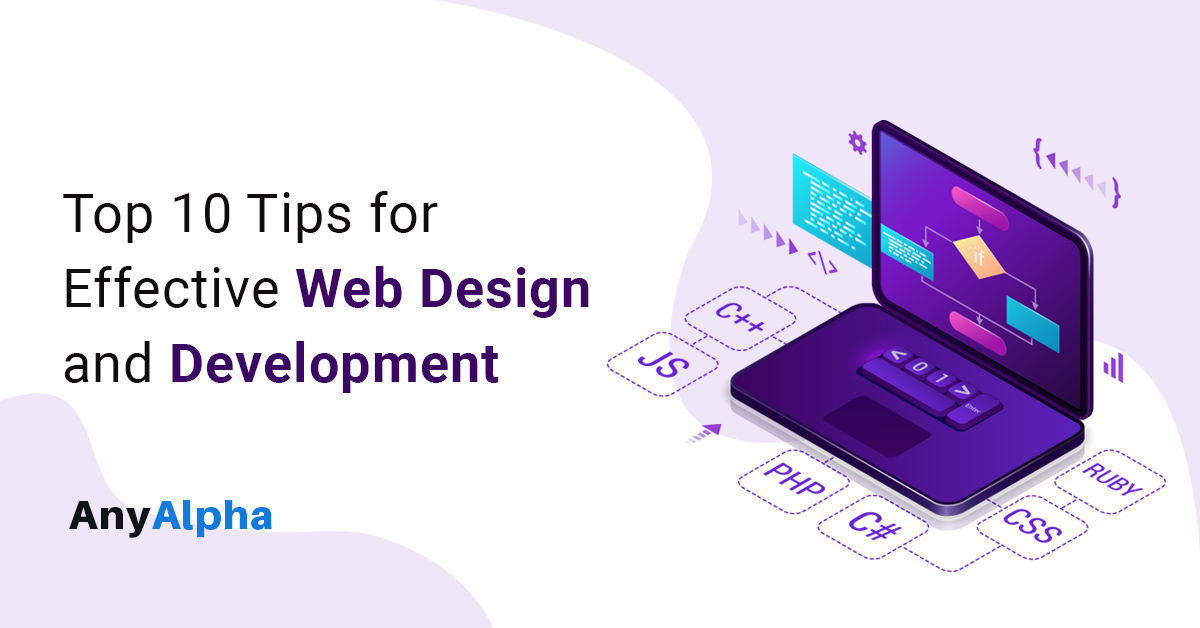Web designing only takes a short while to master if you trade carefully and maintain discipline. As if the process itself wasn’t difficult enough, the technology and tools involved keep evolving constantly, always challenging you to keep up. We have gone through thousands of websites and assembled the top 10 tips for effective web design and development. This should help you work better with your website and thrive for success.
Plan Ahead
It may sound quite obvious to a lot of you, but you’ll be surprised to know that a huge number of people make the mistake of not owning a proper blueprint before jumping into designing a website. A concise plan is essential to develop a website; you’ll need to ask yourself until you can break it down completely: what the purpose of your website is, and how you want to proceed. Not only should your website have a purpose, but every page in it should be well defined with a particular set of goals.
Clear the Clutter
Another beginner mistake is that developers keep a cluttered screen; having planned ahead they have a clear concept of what they want on their websites and simply throw it all on the screen. With cluttered elements, it is nearly impossible to communicate with visitors. The key is to include elements that add value and avoid distractions. Audit your design for essential elements and trim the rest. Use pull-out menus such as fold-outs, and drop-downs, instead of sidebars and sliders, to categorize different elements.
Visual Hierarchy
“Visual hierarchy” is an increasingly popular term in the industry and it is being adopted by web development services worldwide. Basically it is to use different visual elements such as size, color, placement, in order to influence the sequence in which you perceive a design. The visual hierarchy will decide for you which element to see first. For example, if there is a bold, big text followed by small legal information, it is likely that you will see the bold title first. This will allow you to prioritize one element over others, sending a clear message.
Optimize Typography
The words you choose to display on your website are essentially adding value, but there’s a lot more to it than just proper vocabulary. You’ll need to give them the right looks to make an impact. Note that you should stick with web-safe fonts so that they are not distorted when displayed on a range of devices. So keep an eye out for typography in your custom software design and you will be just fine!
Mobility
It is a common misconception that websites are for desktops and computers only. But most people nowadays rely on mobile devices to browse websites. You should make sure to convert your website to an app and maintain a quality condition. Google’s algorithm factors your mobile responsiveness to optimize ranking in the search engine. It works best if you can design the mobile version first, as there is a limited screen space and you can figure out which elements to prioritize. However, you should refrain from using m.dot sites in the URL as they provide slower load time and damage the SEO.
Keep Simple Navigation
With tricky navigation, you cannot attract a lot of visitors. They will soon lose interest and exit. Keep an organized and straightforward interface with simple navigation. Remember the three-click rule; it allows users to gain all the information they may need in three simple clicks. As you gain a clear idea of what you want to display, try to make it as concise as possible. Keeping less than 7 items on the menu is a good idea. Note that the navigation menu needs to be at the top of your website so that users can gain easy access even from different pages. Remember, you are designing a website, not a maze!
Straightforward Call to Action
Your website definitely has a well-defined purpose, and if you cannot communicate it to the visitors the entire website will seem like a waste of space. Therefore, you should make it a priority to come up with a straightforward call to action that is displayed in catchy colors. It is likely to accomplish the task best if you can keep the CTA above the fold, that’s where it is the most visible to visitors.
Know Your Color Palette
Whatever the purpose of your website is, the color of the site should align with that of your brand. You will need to consider color contrast as you are choosing a palette; for example, you don’t want to see purple and red on the same page. Try using one single color for the main element and highlights; it will enhance the visual appeal of a page. It is advisable to be consistent with the palette across different pages on the website.
Keep Minimal Ads
We all know that ads help monetize from a website, but it should not go to the point where your visitors are too distracted. You don’t want to overdo ads. Whether you are using Google Adsense ads, sponsors, or affiliate banners, you will need to place the ads carefully and strategically. This will keep you from appearing as shady and help you gain visitor’s trust.
Communicate with Designer
In the end, it all comes down to your hired web development service, and you will need to communicate your goals and visions in order to bring the best out on the screen. Do not be vague about anything; not even the colors and the placement of the elements.
Conclusion
These are our top 10 tips for effective web design and development. Whether you’re building a website yourself or hiring a web development service for your custom software design, these are the factors you will need to look out for.

Director @Anyalpha, a Top Software Development Company offering Mobile App Development and Website Development Services to Businesses & Startups.



